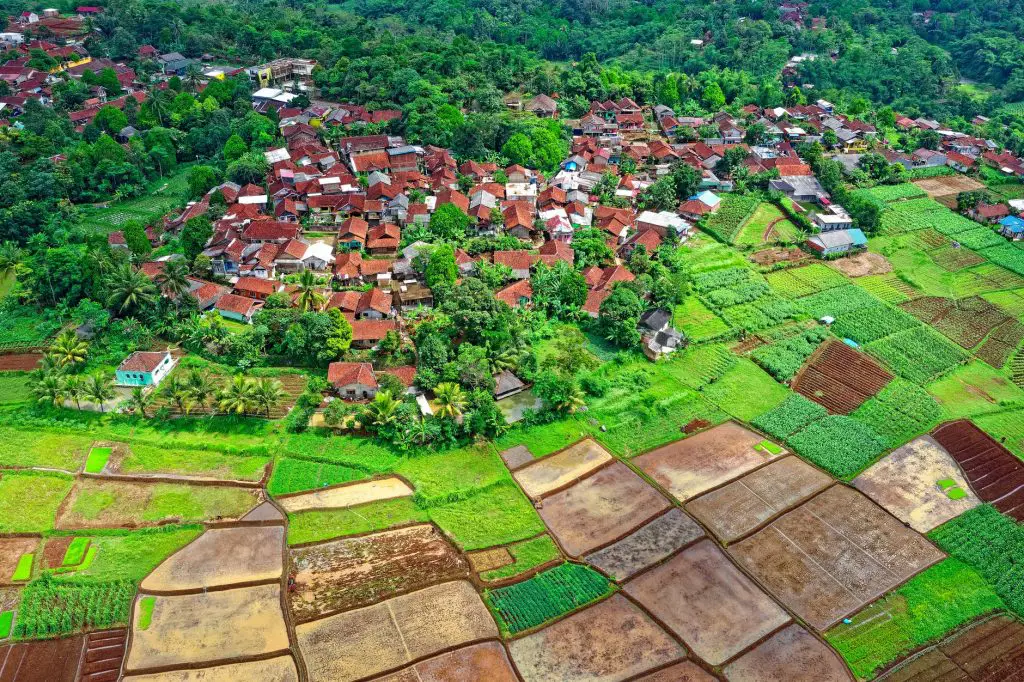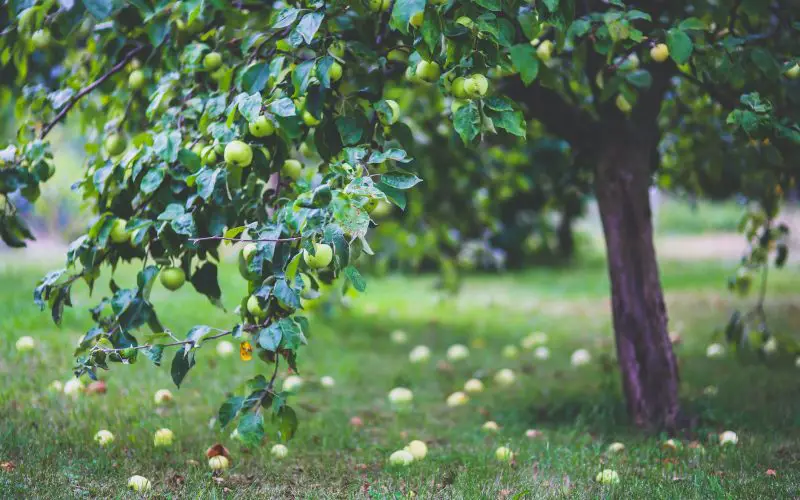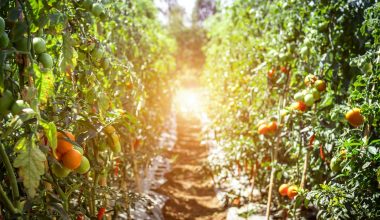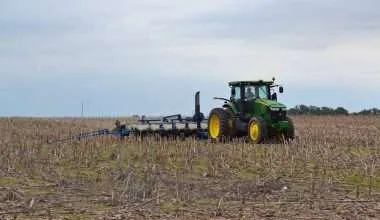Table of Contents Show
Agroforestry is a combination of traditional and modern use of land where there is holistic management of trees along with crops as well as animal production. Agroforestry is defined as an agricultural system that is developed to involve the interaction of shrubs, trees, and agriculture so that they may be managed holistically as a whole unit, rather than being care taken individually. In simple terms, agroforestry is a practice that combines both forestry and agriculture.
The objective of agroforestry is to increase crop production from the land as much as possible while maintaining the local biodiversity of that region. Carrying out agroforestry can also improve upon the fertility of the soil, and as there will be sustainable use of agricultural land for plantation of crops and trees. The problem of soil erosion can also be minimized with agroforestry.
To combat the threat of global warming, environmentalists have been recommending governments and nations to start adopting agroforestry. Agroforestry will not only help to meet the rising demand of food for the masses but can also reduce harmful effects of intensive agriculture on the environment, making it a more sustainable method for food production.
Here we will be looking at the types of agroforestry being carried out, and also the importance of agroforestry.
Types of agroforestry practices
Modern agroforestry systems are classified on the components that farmers are using for practice.
1. Agri-silvicultural systems
The components in these systems are the crops and tree crops that are intercropped between the trees. Crops can be grown for two years, given that protective irrigation is being carried out. Crops can even be grown for four years in this system if refined farming is carried out.
It should however be advised to farmers that grain crops should not be grown repeatedly over a specified period as doing that may potentially lead to economic losses in the long run. Farmers should also give wider spacing for their crops to achieve the best yield as each crop will then obtain the best possible nourishment from the soil.
2. Silvopastoral System
In Silvopastoral systems; Woody plants are used to grow pasture. The components of this system can also be trees or shrubs that are primarily grown for fodder, for livestock, or to improve the quality of the soil.
Silvopasture system can be categorized into three categories; Trees and shrubs on pasture, live fence of fodder-trees and hedges as well as protein banks.
Trees and shrubs on pasture
Shrubs and trees are planted either symmetrically or asymmetrically to help in forage production. The common components in this are Acacia nilotica, Acacia leucopheloea, and Tamarindus indica.

The live fence of fodder trees and hedges
This simply involves the planting of hedges or fodder trees on fences to strengthen them. The tree components used in this type of Agroforestry are Sesbania grandiflora, Acacia species, Erythrina species, and Giliricidia sepium.
Protein Bank
Multipurpose trees are the major components in the protein bank. These trees are usually enriched with high amounts of protein in or around the farmland to provide feed for animal. Species involved in this are Albizia lebbeck, Giliricidia sepium, Sesbania grandiflora, and Acacia nilotica.
3. Agrosilvopastoral systems
Agrosilvopastoral systems involve combining annuals and pastures with woody perennials. This too can be divided into two categories; Woody hedgerows and Home gardens.
Woody hedgerows
Woody hedges are used, as they are fast-growing and are preferential for mulch, soil conservation, and green manure. Common species are Erythrina species, Sesbania grandiflora, and Leucaena luecocephala.
Home gardens
This system is adapted in regions that have high rainfall, such as South Asia and South East Asia. A wide array of tree species can be planted with home gardens. This system also allows the support of animal components. Home gardens are very beneficial, as they promote high productivity and better sustainability. The woody components in the home garden include Psidium guajava, Citrus species, Ancaradium Occidentale, Cocus Nucifera, and Artocarpus heterophyllus. The herbaceous components include onion, pumpkin, cabbage, bhendi, banana, beans, and sweet potato. Not to mention, this will allow you to have a wholesome backyard.
Benefits and Importance of Agroforestry
Agricultural lands, in which trees are planted, may help boost food production. Not just that, it also helps in achieving more food security, there is a more diverse availability of food that helps to increase nutrition and health around the world.
Trees can help provide fruits, nuts, and leaves for consumption by households. Trees that have fallen can be used as wood to make energy that involves heating of housing, cooking, and for livestock. Just remember to plant another in place of the one that falls. Agroforestry also helps in the production of various other forest products which include fodder, fiber, timber, medicinal products, gums, and resins amongst others.
The plantation of trees in the region where agroforestry is being practiced helps to keep the temperature maintained in that region. Trees also help bring torrential rainfall to the region which helps in the growth of greenery and crops in that region and also helps support animals living there.
Trees also help to protect the crops from strong winds and soil erosion which may damage the crops and also the fertility of the soil. There are various medicines and herbal remedies that can be extracted from trees being planted in these regions as well, they can be used to manufacture medicines in cheap thereby allowing the provision of drugs to more people.
Trees being grown in the region act as a safeguard for the animals living there, and also protect the crops from various natural disasters. The root of the trees acts as anchors for the soil protecting it from soil erosion which can be a pretty difficult problem to solve, however as there are trees in the region the soil and its fertility is protected from being harmed.
If agroforestry is carried out carefully with sufficient planning and use of resources, it can help to protect the natural resources of our planet. For instance, growing of trees helps in the improvement of the quality of water by filtering it. Trees also help support biodiversity by providing a habitat for various species in which they can mature, nurture, grow, and reproduce without the harm of being endangered.
Trees in agroforestry help in efficient recycling of nutrients and nitrogen fixation into the soil, both of which helps in making the soil more fertile and adequate for growth of profitable crops.

Agroforestry works holistically; it works to strengthen local communities to thrive and carry on with their local beliefs and culture with the insurance that there is long term sustainability within their region. Agroforestry reduces the need for migration to other sites and helps in developing rural livelihoods and cultural diversity.
Agroforestry provides jobs and employment opportunities to the people living in the region. The planting of trees, the process of harvesting products from trees, the growth of crops, and the management of animal components all require skilled labor which is always present and knows the proper knowledge to carry out the required responsibility. Farmers may benefit from this a lot, and others may even choose to migrate to such a region where agroforestry is the norm to get benefits. The people who were once jobless can work in the part and provide support for their family and be able to live a more sustainable lifestyle.
Agroforestry as we have mentioned, again and again, involves the planting of trees. These trees are very important not just because of the reasons we have mentioned earlier but also because of the fact they can act to fight the impact of climate change on agriculture. Agroforestry helps to reduce the impact on the planet that is being caused by deforestation, by replacing the loss of trees. The trees help to store carbon reducing the impact of carbon emissions on the planet and reducing climate change as well. Agroforestry helps to stabilize the weather and climate of the regions which affects the growth of the crops and also hampers the life of the species living thereby regulating various climate and weather patterns across the region.






